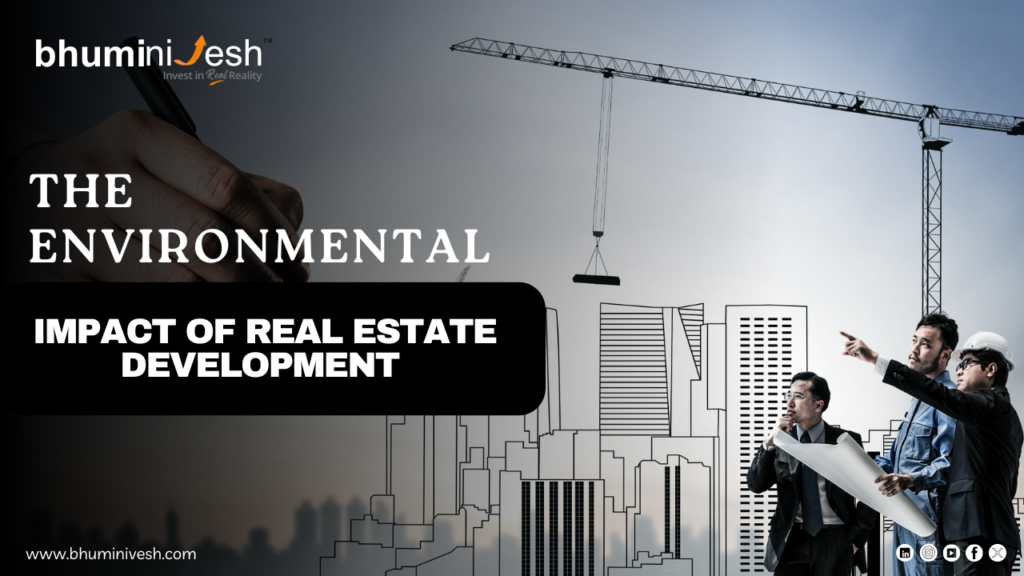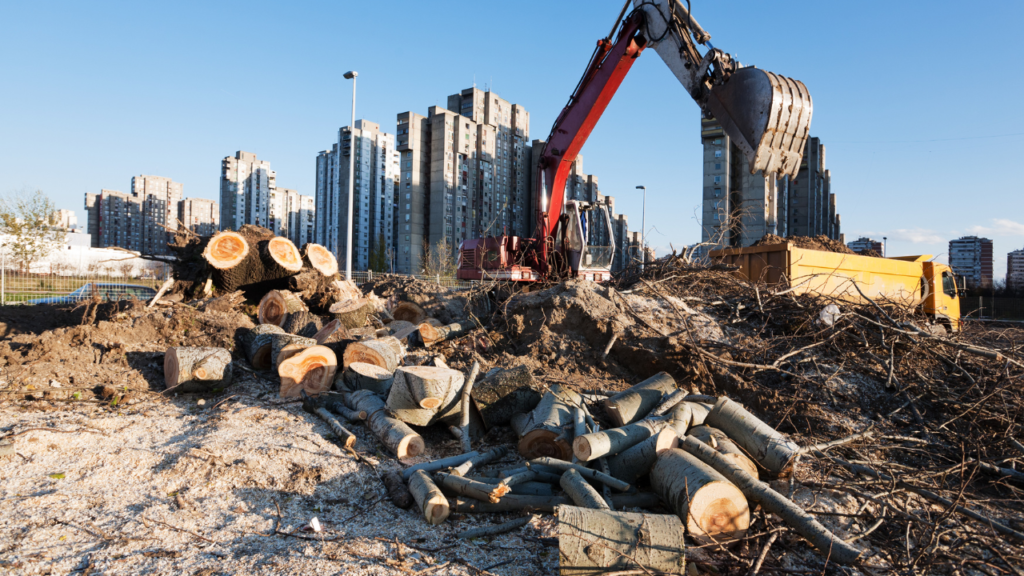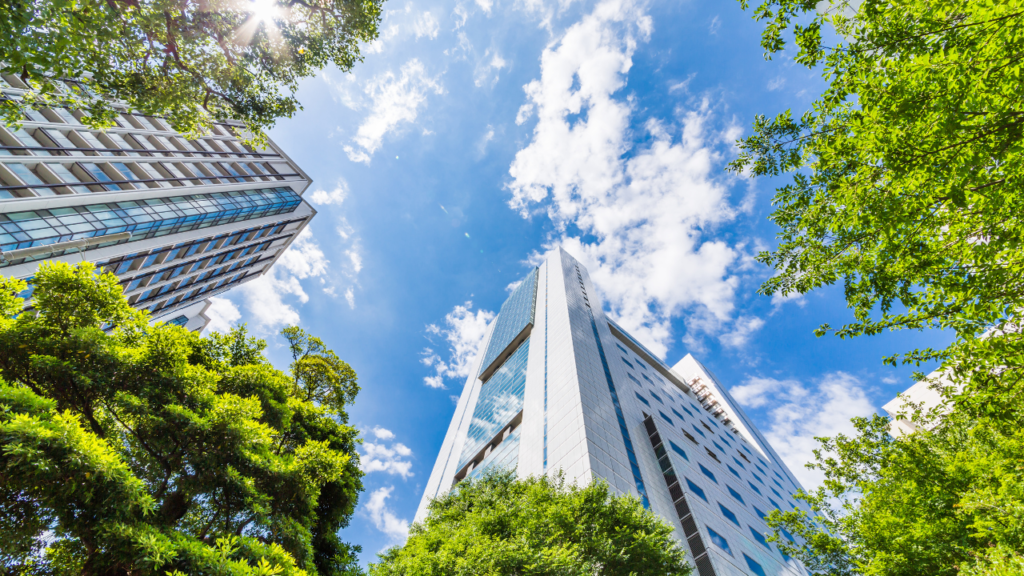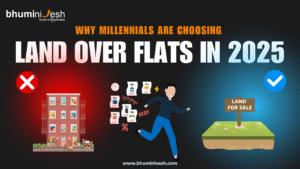
Real estate development has increased dramatically as a result of urbanization’s unrelenting march. Forests and green areas are being lost more and more as cities grow in order to provide room for new homes, shopping centers, and other infrastructure. Economic prosperity and convenience are two benefits of this expansion, but our environment and future generations will pay a heavy price for it.

The Cost to the Environment
There are extensive repercussions when forests and green spaces are destroyed:
Climate Change: By removing carbon dioxide from the atmosphere, forests serve as carbon sinks. Deforestation contributes to climate change and global warming by releasing this stored carbon.
Loss of Biodiversity: Forests are home to a vast array of plant and animal species. These habitats are destroyed by deforestation, which results in the extinction of species and a decline in biodiversity.
Disruption of the Water Cycle: Because they control rainfall and stop soil erosion, forests are essential to the water cycle. Water scarcity, droughts, and floods can result from deforestation.
Air Pollution: By absorbing pollutants, plants and trees help to filter the air. Green space loss can worsen air pollution, which can cause respiratory disorders and other health problems.
Urban Heat Island Effect: Heat is absorbed by concrete and asphalt, raising temperatures in cities relative to nearby rural areas. Heatwaves and energy use may worsen as a result.
Deforestation: It causes sedimentation in streams and the loss of productive land by removing the natural barriers that stop soil erosion.

The Impact Environmental harm from real estate development on Future Generations
Future generations will be significantly impacted by the environmental effects of real estate development, in addition to the current generation:
➡️Resource Depletion: Future generations will experience shortages and increased expenses when natural resources such as water and timber are exhausted.
➡️Climate Change: Future generations will be at risk due to the intensifying consequences of climate change, which include extreme weather events and increasing sea levels.
➡️Health Concerns: Development-related air and water pollution can generate a number of health issues for coming generations.
➡️Loss of Natural Beauty: Future generations will not be able to enjoy the aesthetic and recreational advantages of nature if forests and green places are lost.
➡️Mental Health: Research has indicated that spending time in nature improves mental health. Anxiety and stress levels may rise in metropolitan settings due to a lack of green spaces.
➡️Social Inequality: Communities being uprooted and natural spaces being distributed unevenly can both worsen social inequality.
Here are some actual instances when the destruction of forests and green spaces has resulted from real estate development:
1. Amazon Rainforest:
The growth of agricultural land, especially for the production of soy and beef, is largely responsible for the deforestation in the Amazon. But a significant portion is also ascribed to the growth of cities and the construction of infrastructure, such as towns and highways.
2. Coastal Development and Mangrove Destruction:
Mangrove forests are frequently cleared for the building of hotels, neighborhoods, and other infrastructure by coastal communities and resorts. In many tropical and subtropical areas, this is standard procedure.
3. Urban Sprawl and Green Space Loss:
As cities grow, green places like wetlands, forests, and agricultural land are usually turned into residential and commercial areas. This is especially noticeable in cities in developing nations that are expanding quickly.

A Sustainable Future through Real Estate Development
We must take a more sustainable approach to real estate development if we want to provide a sustainable future for present and future generations. This comprises:
➡️Preserving Green Spaces: It is essential to preserve the woods and green spaces that currently exist.
➡️Sustainable Building Practices: New building can have a less negative environmental impact by using eco-friendly materials and energy-efficient designs.
➡️Urban planning: Developing mixed-use, walkable neighborhoods can encourage sustainable living and lessen the need for driving.
➡️Renewable Energy: By making investments in renewable energy sources, one can lessen their dependency on fossil fuels and slow down global warming.
➡️Green Infrastructure: Including green spaces in cities can make them more livable, lower stormwater runoff, and enhance air quality.
➡️Green walls and roofs: These can enhance air quality and lessen the effects of urban heat islands.
➡️Water Conservation: Water consumption can be decreased by putting water-saving techniques and technology into place.
➡️Recycling and Waste Reduction: Construction and development can have a less negative environmental impact by recycling resources and minimizing waste.
Conclusion :
Green spaces and natural habitats have been severely reduced as a result of the unrelenting drive for urbanization and real estate development. Although progress is necessary, environmental sustainability must be balanced with it. Unchecked development has far-reaching effects that will affect future generations, including air pollution, biodiversity loss, and climate change.
Eco-friendly real estate development methods must be used in order to guarantee a sustainable future. This entails investing in renewable energy sources, encouraging sustainable building techniques, and maintaining green places. We can lessen the detrimental effects of development and build a stronger, healthier planet for future generations by making thoughtful decisions and placing a high priority on environmental sustainability.



Emerging Real Estate Products Beyond 2BHK & 3BHK: New Concepts Reshaping Urban Living

🏠 How to Afford a Home on a ₹50,000 Monthly Salary (2025 Guide for Tier-1 & Tier-2 Cities)

🏛️ Why a Registered Deed Is No Longer Enough to Prove Property Ownership in India


